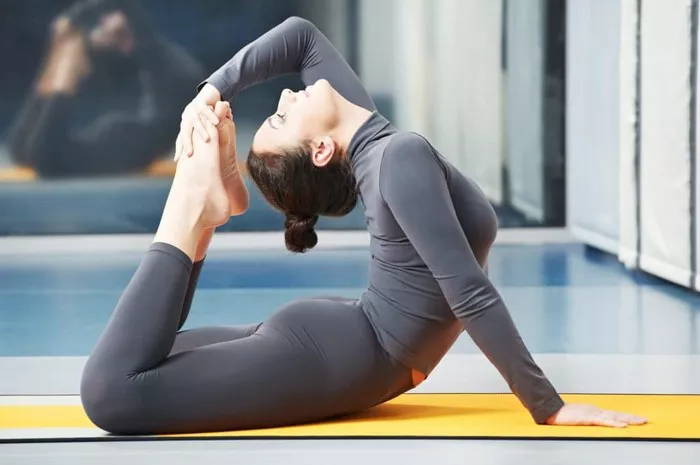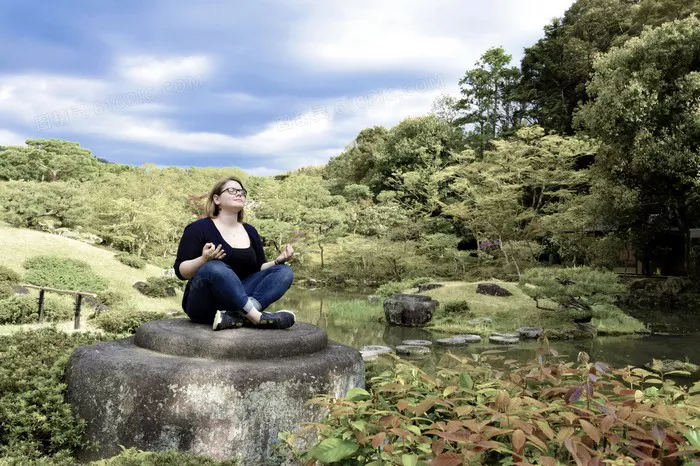Yoga is a centuries-old practice that integrates the mind, body, and spirit through physical postures (asanas), breath control (pranayama), and meditation. One of the simplest yet most significant poses in yoga is the prayer pose, also known as Anjali Mudra or Pranamasana. This foundational posture is often used at the beginning and end of a yoga session, signifying respect, gratitude, and inner balance. While it may appear simple, the prayer pose carries profound meaning and benefits that enhance both physical and mental well-being.
Understanding the Prayer Pose (Anjali Mudra or Pranamasana)
The prayer pose is a standing yoga posture where the hands are brought together in front of the heart in a gesture of reverence. “Anjali” means “offering” in Sanskrit, and “Mudra” refers to a symbolic hand position or gesture. The pose is widely practiced across different yoga traditions and is commonly seen in greeting gestures such as “Namaste.”
How to Perform the Prayer Pose (Anjali Mudra)
The prayer pose is simple to practice but requires mindfulness and proper alignment. Follow these steps to perform the posture correctly:
Stand in Mountain Pose (Tadasana): Begin by standing upright with your feet together or hip-width apart. Distribute your weight evenly across both feet.
Engage Your Core: Draw your navel slightly inward to activate your core muscles, keeping the spine tall and elongated.
Relax Your Shoulders: Allow your shoulders to drop away from your ears, maintaining a relaxed yet upright posture.
Bring Your Palms Together: Press your palms together at the center of your chest, fingers pointing upward. Ensure that the thumbs lightly touch the sternum.
Close Your Eyes (Optional): To deepen the meditative aspect of the pose, gently close your eyes and focus on your breath.
Maintain Steady Breathing: Breathe deeply and evenly, allowing your breath to calm the mind and center your awareness.
This pose can be held for a few breaths or longer, depending on its intended purpose within a yoga practice.
Symbolic and Spiritual Meaning of the Prayer Pose
The prayer pose is deeply rooted in symbolism and spirituality. In yoga and many spiritual traditions, placing the hands together at the heart represents unity, harmony, and devotion. The gesture signifies an offering of gratitude and the connection between the physical and spiritual self.
The phrase “Namaste,” often spoken with Anjali Mudra, translates to “The divine in me honors the divine in you.” This reflects yoga’s philosophy of respect and interconnectedness.
Benefits of the Prayer Pose
While the prayer pose may seem passive, it offers numerous physical, mental, and emotional benefits when practiced mindfully.
Improves Posture and Alignment
Practicing the prayer pose encourages proper spinal alignment and strengthens the core, helping to improve overall posture. By standing tall and engaging the core, the body naturally maintains better balance and stability.
Enhances Focus and Concentration
Anjali Mudra is a centering pose that helps calm the mind and improve concentration. Holding this position while focusing on the breath enhances mindfulness and mental clarity.
Reduces Stress and Anxiety
Since this pose is often incorporated into meditation and breathing exercises, it promotes relaxation and reduces stress. The calming effect of deep breathing in the pose helps regulate the nervous system and lower anxiety levels.
Strengthens the Hands and Wrists
Pressing the palms together engages the muscles in the hands and wrists, improving flexibility and strength. This can be particularly beneficial for individuals who experience wrist discomfort or stiffness.
Encourages Emotional Balance
The prayer pose fosters a sense of gratitude and inner peace. It encourages self-reflection and emotional balance, helping individuals develop a positive and compassionate mindset.
Supports Heart Health
Since the hands are placed at the heart center, this pose is often associated with heart-opening practices. Deep, mindful breathing in the posture enhances oxygen flow and supports cardiovascular health.
Variations of the Prayer Pose
While the traditional prayer pose is performed in a standing position, there are several variations that add depth and variety to the practice.
Seated Anjali Mudra
This variation is performed in a cross-legged seated position, such as Sukhasana (Easy Pose) or Padmasana (Lotus Pose). It is commonly used in meditation and pranayama practices.
Anjali Mudra Behind the Back (Reverse Prayer Pose)
In this variation, the hands are pressed together behind the back, opening the shoulders and chest. This variation enhances flexibility and is particularly beneficial for those with tight shoulders.
Flowing Anjali Mudra
Some yoga sequences incorporate movement with Anjali Mudra. For example, transitioning from the prayer pose to a forward bend or incorporating it into Sun Salutations (Surya Namaskar) adds fluidity to the practice.
Incorporating the Prayer Pose into Yoga Practice
The prayer pose is a versatile posture that can be integrated into various yoga practices, including:
Beginning and Ending a Yoga Session
Many yoga sessions start and conclude with the prayer pose to set an intention at the beginning and express gratitude at the end.
Sun Salutations (Surya Namaskar)
The prayer pose serves as the starting and ending posture in Sun Salutations, linking movement with breath and promoting a meditative flow.
Meditation and Breathwork (Pranayama)
Sitting in the prayer pose during meditation helps calm the mind and deepen breath awareness, making it a great addition to pranayama exercises.
Balance Poses
Incorporating Anjali Mudra into balance poses such as Tree Pose (Vrksasana) enhances stability and focus.
Conclusion
The prayer pose (Anjali Mudra or Pranamasana) is a fundamental yoga posture that embodies mindfulness, gratitude, and unity. While seemingly simple, it carries profound physical, mental, and spiritual benefits. Whether used for centering before practice, enhancing meditation, or fostering emotional balance, this posture serves as a reminder of the deep connection between the mind and body.
By incorporating the prayer pose into your yoga routine with intention and awareness, you can cultivate a sense of peace, focus, and gratitude that extends beyond the mat and into daily life.
Related Topics:























